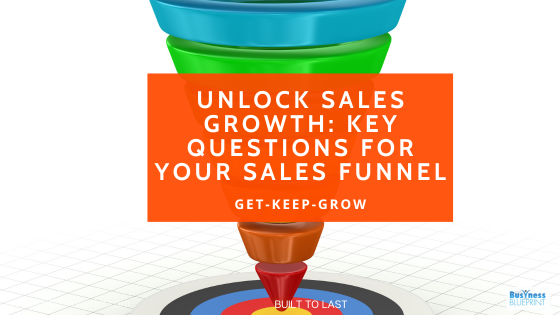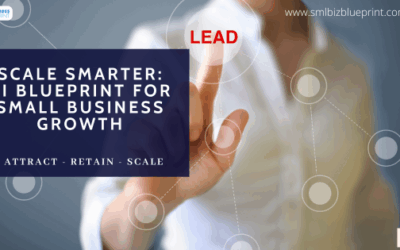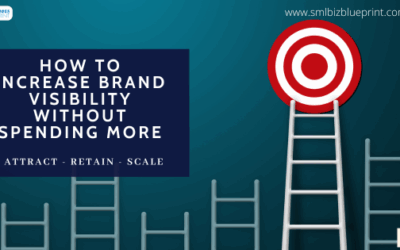For a small business, standing out isn’t just about offering a unique product or service; it’s about how effectively you guide potential customers through your sales funnel.
This journey, from the first point of contact to the final sale, is where true connections are forged.

Why Focus on Your Sales Funnel?
A well-optimized sales funnel is the backbone of any successful business, serving as a roadmap for converting prospects into loyal customers. But how can you ensure that your funnel is functional and exceptional?
The answer lies in asking the right questions that identify areas for improvement and unlock opportunities for growth.
Understanding Your Target Audience: The Key to a Powerful Sales Funnel
To transform your sales funnel into a powerful conversion tool, you must start by looking inward at the very core of your business: your target audience.
Understanding who your customers are, what they need, and what drives their decisions is not just beneficial—it’s essential.
Here, we explore two pivotal questions to help you gain deep insights into your audience.
Who is Your Ideal Customer?
Imagine your ideal customer. Who are they? What do they value? And most importantly, what are they seeking in a product or service like yours?
Defining your ideal customer isn’t about limiting your market; it’s about focusing your efforts to ensure maximum impact.
By creating a detailed customer persona, you can tailor your marketing, products, and services to meet your target audience’s specific needs and desires, resulting in higher engagement and conversion rates.
Actionable Insight:
Start by gathering data from your existing customers. Look for common characteristics, preferences, and buying behaviours. Use this information to build a comprehensive profile of your ideal customer, considering factors like age, location, interests, and pain points.
This profile will guide your marketing strategies, content creation, and product development, ensuring they align with your target audience’s expectations and needs.
What are the Pain Points of Your Target Audience?
Understanding your customers goes beyond knowing their demographics and interests; it’s about empathising with their challenges and offering solutions.
What obstacles do they face in their personal or professional lives?
How does your product or service alleviate these pain points?
By addressing these questions, you can position your offering as the answer to their needs, increasing its perceived value and relevance.
Actionable Insight:
Conduct surveys, focus groups, or one-on-one interviews with current or potential customers to uncover their pain points. Analyse customer support inquiries and feedback to identify common themes.
Then, use this information to adjust your messaging, highlighting how your product or service addresses these issues, making it an indispensable part of their solution.
Evaluating Your Current Sales Funnel: Identifying Opportunities for Growth
With a clear understanding of your target audience, the next step is to turn a critical eye toward your existing sales funnel. This evaluation is not about finding faults but uncovering opportunities to refine and enhance your customer’s journey.
Let’s dive into three crucial questions that will guide this introspective process.
Where Do Most Prospects Drop Off in Your Current Sales Funnel?
A common challenge for many businesses is identifying the stages in the sales funnel where potential customers lose interest or decide not to proceed.
This “leak” in the funnel can often be attributed to various factors, from unclear messaging to a complicated checkout process. By pinpointing these drop-off points, you can take targeted actions to keep your prospects engaged and moving smoothly towards a purchase.
Actionable Insight:
Utilise analytics tools to track the customer journey through your website and sales processes. Look for patterns where engagement drops or where prospects exit without converting.
Once identified, test changes to these areas, such as simplifying forms, clarifying product benefits, or adding customer testimonials to build trust and encourage completion of the sales process.
How Are You Capturing Leads?
Capturing leads is the first step in actively guiding potential customers through your sales funnel. The effectiveness of your lead capture strategies directly impacts the size and quality of your prospect pool.
It’s essential to ensure that your methods for attracting and retaining interest are optimised for conversion.
Actionable Insight:
Review your lead capture mechanisms, such as sign-up forms, landing pages, and lead magnets. Are they compelling, easy to use, and accessible?
Consider implementing A/B testing to try different approaches and messaging to see what resonates most with your audience.
The goal is to make it as easy for interested prospects to provide their information and take the next step in your sales funnel.
What Is Your Lead Nurturing Process?
Once leads are captured, nurturing them becomes your priority. A robust lead nurturing process keeps potential customers engaged, informed, and ready to take action.
It’s about building a relationship and providing value at every stage, ensuring that your product or service is at the forefront of their minds when the decision-making moment arrives.
Actionable Insight:
Assess your current communication strategies for nurturing leads. Are you providing regular, valuable content that addresses their needs and interests?
Utilise email marketing, social media, and personalised content to keep your brand relevant. Consider segmenting your leads to deliver more targeted and relevant messages, increasing the likelihood of conversion.
Take Action Today
Before diving deeper, take a moment to consider where you stand. Is your sales funnel delivering the desired results, or is it merely a pathway that leads prospects towards indecision?
If you’re ready to transform your approach and elevate your business, sign up now for exclusive insights and strategies beyond this article.
Apply Here: Sales Funnel Mastery

Enhancing Conversion Tactics: Strategies for Turning Prospects into Customers
Having identified your ideal customers and assessed your sales funnel’s performance, it’s time to focus on the most critical aspect: conversion.
Effective conversion tactics are the linchpin of a successful sales funnel, turning interest into action. Let’s explore two pivotal strategies that can significantly enhance your conversion rates.
How Personalized Are Your Communication and Marketing Efforts?
In today’s market, personalisation is not just a buzzword; it’s a fundamental expectation.
Customers are more likely to engage with content and offers that resonate with their needs and preferences. Personalisation can dramatically increase the effectiveness of your marketing efforts, leading to higher conversion rates and customer loyalty.
Actionable Insight:
Dive into your customer data to segment your audience based on behaviour, preferences, and purchase history. Use this information to tailor your communication, from personalised emails to targeted ads, ensuring that your messages speak directly to the individual’s needs.
Tools like CRM software can automate this process, enabling dynamic personalisation at scale.
What Incentives Are You Offering to Encourage Conversions?
Incentives can be a powerful motivator in the customer’s decision-making process. Whether it’s a limited-time discount, a free trial, or exclusive access to premium content, offering something of value can nudge hesitant prospects over the line into becoming paying customers.
Actionable Insight:
Evaluate your current incentives and consider how they align with your target audience’s desires and business goals. Test different types of incentives to discover what drives the most conversions among your prospects.
Remember, the perceived value of the incentive can often outweigh its actual cost, making it a worthwhile investment in your conversion strategy.
Leveraging Technology and Continuous Improvement: Key to Sales Funnel Mastery
In the digital age, leveraging technology is not just an advantage; it’s necessary for optimising your sales funnel.
Furthermore, the business landscape is ever-evolving, necessitating a mindset of continuous improvement. This section explores how technology can streamline your sales process and why regularly revisiting and refining your strategy is vital for long-term success.
Are You Utilizing Automation in Your Sales Process?
Automation can transform your sales funnel, making processes more efficient and allowing you to focus on strategy and growth.
From lead generation to customer follow-up, automation tools can ensure that your business delivers consistent, timely, and personalised communication to your prospects and customers.
Actionable Insight:
Assess your sales funnel for tasks that can be automated, such as email campaigns, lead scoring, and customer segmentation. Implementing CRM and marketing automation tools can reduce manual work, minimise errors, and ensure no lead is neglected.
Start small, automate one process at a time, and measure the impact to ensure it aligns with your business objectives.
How Are You Measuring the Performance of Your Sales Funnel?
The only way to know if your sales funnel is working effectively is to measure its performance meticulously. Utilising the right metrics and analytics tools can provide insights into what’s working, what’s not, and where there’s room for improvement.
Actionable Insight:
Define key performance indicators (KPIs) for each stage of your sales funnel, such as conversion rates, average deal size, and customer acquisition cost.
Use analytics tools to track these metrics over time, enabling you to identify trends, pinpoint bottlenecks, and make data-driven decisions to optimise your funnel.
Embracing Change and Customer Insights: The Path to Sales Funnel Excellence
In the dynamic business world, staying ahead requires not just adopting the latest technologies or strategies but also being receptive to feedback and willing to adapt.
This final section explores the significance of regularly updating your sales strategies and the pivotal role of customer feedback in refining your sales funnel.
How Often Do You Review and Update Your Sales Strategies?
In an ever-evolving market, what worked yesterday might not suffice tomorrow. Regularly reviewing and updating your sales strategies ensures that your business remains relevant and responsive to market changes and customer needs.
Actionable Insight:
Set a regular schedule for reviewing your sales strategies, whether quarterly or bi-annually, involving key team members. Analyse performance data, market trends, and competitor activities to inform your strategy adjustments.
Be open to testing new approaches and pivoting as necessary to stay aligned with your business goals and customer expectations.
Are You Collecting and Utilizing Customer Feedback to Improve Your Sales Funnel?
Your customers are your most valuable source of insight when refining your sales funnel.
Their feedback can highlight areas for improvement, uncover new opportunities, and validate the effectiveness of your current strategies.
Actionable Insight:
Implement systematic methods for collecting customer feedback at various sales funnel stages, such as surveys, feedback forms, and direct conversations.
Actively listen to your customers’ needs and concerns, and use this feedback to make informed adjustments to your sales process, product offerings, and customer service practices.

Top Priorities:
Understand and Segment Your Target Audience:
Understanding your ideal customer is foundational to optimising your sales funnel. By segmenting your audience based on their specific needs, preferences, and behaviour, you can tailor your marketing efforts and personalise communication, making your strategies more effective and increasing conversion rates.
Leverage Automation and Analytics:
Implement automation tools to streamline repetitive tasks within your sales process, ensuring efficiency and consistency in lead management and customer engagement.
Utilise analytics to measure your sales funnel’s performance, identify improvement areas, and make data-driven decisions to enhance your strategies.
Regularly Collect and Act on Customer Feedback:
Make customer feedback an integral part of your sales funnel optimisation process. Regularly collect customer insights about their experiences, preferences, and pain points.
Use this valuable information to adjust your sales strategies, product offerings, and customer service practices, ensuring your sales funnel aligns with customer needs and expectations.
Unique Enhancements
Leverage Social Proof Beyond Testimonials:
While customer testimonials are a common form of social proof, consider more creative applications such as real-time notifications of recent purchases or user activities on your website. This can create a sense of urgency and validate the decision-making process for prospective customers, encouraging them to move forward in the sales funnel.
Gamify the User Experience:
Incorporating gamification elements into the sales process can significantly increase engagement and interaction. For example, offering rewards, badges, or points for completing specific actions (like signing up for a newsletter or purchasing) can make the customer journey more engaging and fun, potentially leading to higher conversion rates.
Utilise Psychological Triggers in Content and Design:
Beyond traditional marketing messages, applying psychological principles such as the scarcity principle (highlighting limited availability) or the bandwagon effect (showing how many others have made a purchase) in your content and website design can subtly influence buying behaviour. When used ethically and sparingly, these triggers can enhance your sales funnel’s effectiveness by tapping into deeper, often subconscious, decision-making factors.
FAQs
What are the first steps to take when optimising a sales funnel?
Begin by clearly defining your target audience and understanding their needs and pain points. Evaluate your current sales funnel to identify drop-off points and areas for improvement.
How can I personalise my marketing efforts without significant investment?
Utilise customer data to segment your audience and tailor your messaging. Simple personalisation techniques include using the customer’s name in communications and recommending products based on past purchases.
What metrics should I focus on to measure my sales funnel’s effectiveness?
Key metrics include conversion rates at each funnel stage, lead acquisition costs, customer lifetime value, and overall ROI of marketing campaigns.
How often should I seek customer feedback?
Regularly—after key interactions, at regular intervals, and following significant changes to your product or service. This ensures you have ongoing insights into customer satisfaction and evolving needs.
Can small businesses benefit from sales funnel automation?
Absolutely. Automation can help small businesses manage leads more efficiently, personalise customer interactions, and scale their marketing efforts effectively.
In conclusion, optimising your sales funnel is an ongoing journey of discovery, adaptation, and growth.
By asking the right questions, leveraging technology, and staying attuned to customer feedback, you can build a sales funnel that drives conversions and fosters lasting customer relationships.
Remember, the goal is to sell and serve your customers by providing unmatched value at every stage of their journey.




